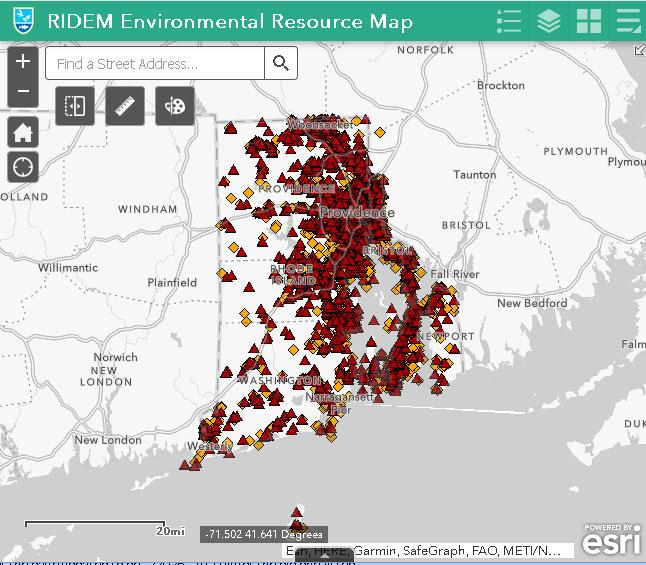Citing “dangerous health risks,” US adds $1 billion to Superfund cleanup efforts
The US is earmarking more than $1 billion to help clean up long-standing
hazardous waste sites jeopardizing the health of communities around the
country, a move that will impact 110 sites, officials said on Tuesday.
Hazmat sites in Rhode Island. When you click on the
list of Rhode Island NPL sites on DEM's website, you are sent
to an EPA page that is headed "Sorry, but this web
page does not exist." Very helpful
The money for new and continuing projects marks the
“final wave” of a total of roughly $3.5 billion allocated in President Biden’s
Bipartisan Infrastructure Law for work at so-called “Superfund” sites, and
addresses an administrative initiative directing funds to projects that benefit
disadvantaged communities, Janet McCabe, deputy administrator of the
Environmental Protection Agency (EPA), said in a press conference held to announce the funding.
Communities around the country have been “long-overburdened by pollution”
that poses “dangerous health risks,” McCabe said. Minority populations have
been particularly impacted, with more than one in four Black and Hispanic
Americans living within three miles of a Superfund site.
Of 25 sites set to receive funding for new projects, 75% are in
historically underserved communities, according to McCabe.
“This funding will help improve people’s lives, especially those who’ve
long been on the front lines of pollution,” she said.
“National priorities”
In addition to the 25 sites receiving new project funding, another 85
sites are receiving money to continue ongoing cleanup projects.
Superfund sites are federally designated through the Comprehensive Environmental Response, Compensation and Liability Act (CERLCA) as abandoned or uncontrolled areas contaminated with hazardous waste.
The law
provides for the government to tax polluters and oversee cleanup and mitigation
efforts. There are more than 1,300 such sites around the country listed as
“national priorities”- many that have polluted communities with dangerous
toxins for decades.
The five states having the highest number of
Superfund sites are New Jersey, California, Pennsylvania, New York and
Michigan, in that order.
In New Jersey, half of the residents live within three miles of a
Superfund site, according to US Rep. Frank Pallone, who represents New Jersey
and is ranking member of the House Energy and Commerce Committee.
Too many communities have “waited a long time for relief,” he said in the
press conference.
“All of our communities across the country deserve to enjoy their towns
and use their space without fear of the health risks that come with living near
a Superfund site,” said Pallone.
Decades of contamination
Among the sites that will benefit from the funding, according to the
Biden administration, are the following:
- ·
A site in East Helena Montana
where a lead smelter operated from 1888 to 2001, leaving soil and groundwater
contaminated with lead and arsenic. Close to 800 homes and 50 businesses in the
area have had soil replaced; the government is still working to cap a 14
million-ton waste pile.
- ·
A 160-acre abandoned open-pit mercury mine in Lake County, California. The
site contains approximately 2.5 million cubic yards of mine waste and stretches
along 1,300 feet of lake shoreline. Mine waste was dumped into the lake and
mercury has built up in the fish in the lake. The EPA is working to combine and
cover mine waste piles, remove and cover contaminated residential soils and
reduce the mercury levels in lake sediment and fish, among other goals.
- ·
A 63-acre site in Delaware where
chlorinated benzene compounds were manufactured from 1966 to 2002. Chemical
spills and other activities at the site years ago left groundwater, soil, creek
sediments, surface water and nearby wetlands contaminated with hazardous
substances.
Brenda Mallory, chair of the Council on Environmental Quality, said the work was part of a larger effort to ensure “clean and safe environments for every community.”
Other initiatives include removing lead from
drinking water, eliminating harmful per- and polyfluoroalkyl substances (PFAS),
cleaning up orphaned oil and gas wells, and other actions, she said.
“No parent should have to worry whether the playground or yard their
children are playing in is safe and clean,” she said in the press conference.